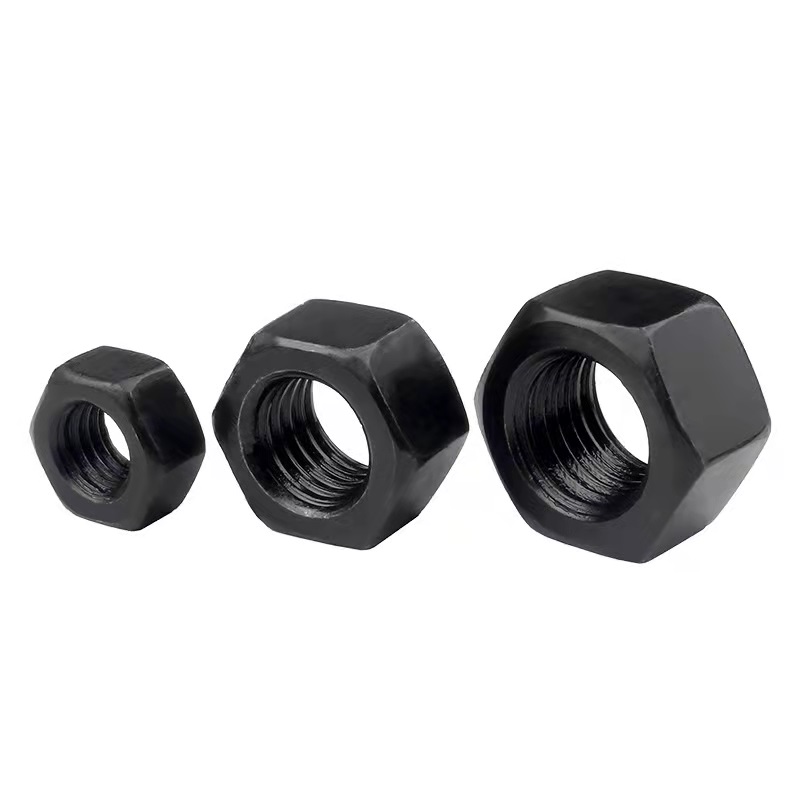Optimal Safety Solutions for Guardrail Bolt Installation and Maintenance
Nov . 04, 2024 19:31 Back to list
Optimal Safety Solutions for Guardrail Bolt Installation and Maintenance
The Best Guardrail Bolts Ensuring Safety and Stability in Infrastructure
Guardrails are an essential component of road safety systems, designed to prevent vehicles from veering off the road and to protect both drivers and pedestrians. However, the effectiveness of guardrails largely depends on the quality and reliability of the components that hold them in place, particularly the guardrail bolts. In this article, we will explore what makes the best guardrail bolts, their importance in ensuring safety, and the best practices for choosing and installing them.
The Importance of Quality Guardrail Bolts
Guardrail bolts serve a crucial function in maintaining the stability and structural integrity of guardrails. They are responsible for securely fastening the guardrail panels to the posts, ensuring that they can withstand both environmental elements and potential impacts from vehicles. Given the weight and dynamics of vehicles, as well as varying weather conditions, the bolts must not only be durable but also resistant to corrosion and wear.
Using substandard bolts can lead to catastrophic failures in guardrail systems. If a bolt breaks or loosens, the guardrail may collapse during a collision, failing to provide the needed protection. Therefore, selecting the highest quality guardrail bolts is paramount in safeguarding lives and infrastructure.
Characteristics of the Best Guardrail Bolts
1. Material Strength The best guardrail bolts are usually made from high-strength steel or other durable materials capable of withstanding significant forces. They often meet specific mechanical property standards that dictate their tensile strength, yield strength, and elongation.
2. Corrosion Resistance Since guardrails are exposed to various environmental factors, including moisture and chemicals from road treatments, corrosion resistance is vital. Stainless steel bolts or those with a robust protective coating (such as galvanized or zinc-coated) provide excellent durability against corrosion.
3. Design Specifications Quality guardrail bolts should adhere to industry standards and design specifications, such as ASTM (American Society for Testing and Materials) or AASHTO (American Association of State Highway and Transportation Officials). These standards ensure that the bolts are fit for purpose and have been tested for performance under real-world conditions.
4. Ease of Installation The best guardrail bolts are designed for efficient installation. Features such as a hexagonal head for easy tightening with standard tools can significantly reduce installation time and effort, enhancing productivity on-site.
5. Cost-Effectiveness While it might be tempting to go for the cheapest options, investing in high-quality guardrail bolts can save costs in the long run. High-quality bolts require less frequent replacement and are less likely to fail, ultimately leading to reduced maintenance needs and enhanced safety.
best guardrail bolts

Choosing the Right Guardrail Bolts
When selecting guardrail bolts, it is crucial to consider both the specifications of the guardrails and the environment in which they will be deployed. Here are some best practices for choosing the right guardrail bolts
- Consult Engineering Plans Always refer to the engineering plans and specifications for the project. These documents often specify the type, size, and grade of bolts required for the installation.
- Work with Reputable Suppliers Partner with suppliers that specialize in highway infrastructure components. They can provide insights into the best products available and ensure compliance with relevant safety standards.
- Consider Environmental Factors Evaluate the environmental conditions of the installation site. For areas prone to extreme weather or exposure to harsh chemicals, ensure that the bolts selected can withstand these challenges.
- Quality Assurance Look for bolts that come with quality assurance or certifications from testing agencies. This provides extra peace of mind regarding their reliability.
Installation Considerations
Proper installation of guardrail bolts is as important as selecting the right ones. Ensure that all bolts are torqued to the manufacturer’s specifications to prevent loosening over time. Regular maintenance checks should also be scheduled to inspect and replace any worn or corroded bolts, thus ensuring ongoing safety.
Conclusion
Guardrail bolts are not just small components; they are critical to the safety and functionality of road safety systems. By choosing the best guardrail bolts with appropriate material strength, corrosion resistance, and compliance with industry standards, we can significantly enhance the efficacy of guardrails. Ensuring proper selection, installation, and maintenance of these bolts is imperative for safeguarding lives on our roads. In the end, investing in quality guardrail bolts is an investment in safety and longevity in infrastructure.
Latest news
-
High-Quality Panel Stud Bolt Reliable Panel Stud Bolt Factory & Suppliers
NewsJul.08,2025
-
High-Precision Fine Thread Locknuts Manufacturer & Supplier Custom Solutions
NewsJul.08,2025
-
PH Imperial Stud Bolt – High Strength Fasteners from Leading Supplier & Factory
NewsJul.07,2025
-
High-Quality Allen Wrench Bolts Leading Factory, Company & Suppliers
NewsJul.07,2025
-
Wholesale Ball Stud Bolt - High Quality Supplier & Factory Price Reliable Wholesale Ball Stud Bolt Company
NewsJul.06,2025
-
High-Strength Alloy Bolts Manufacturer & Supplier Quality Alloy Fasteners Factory
NewsJul.06,2025
